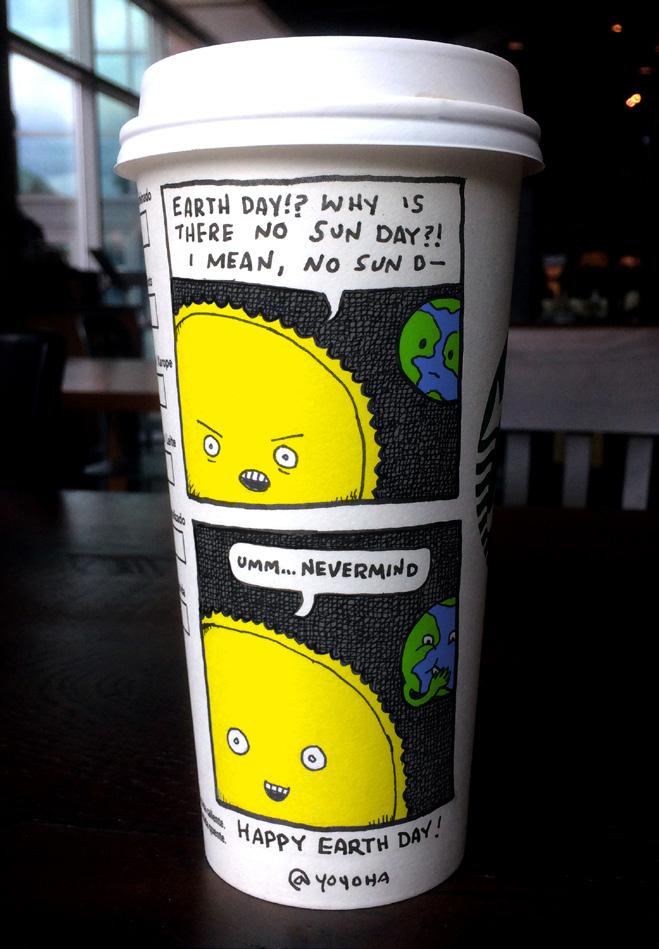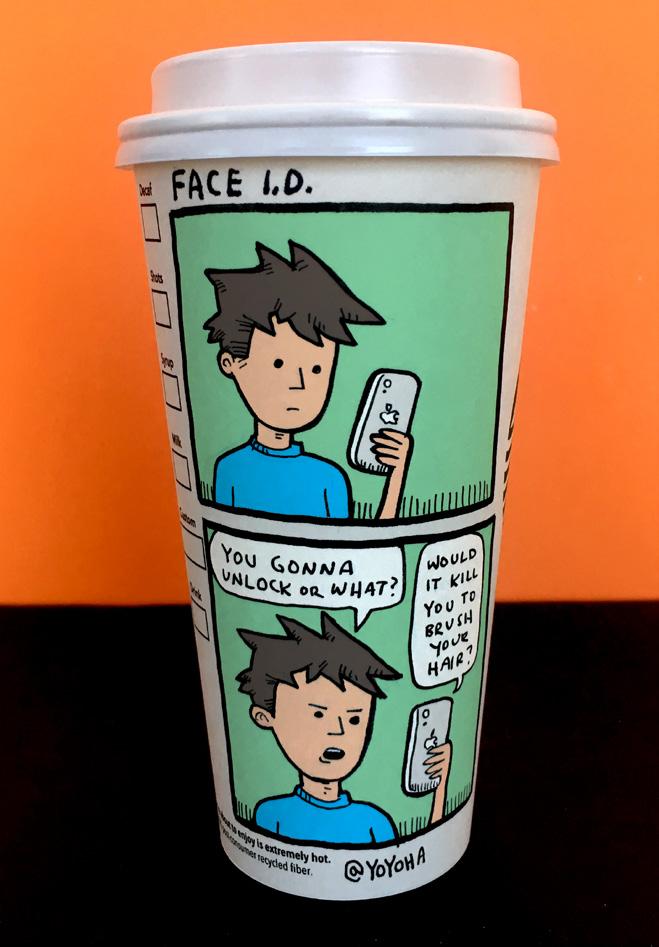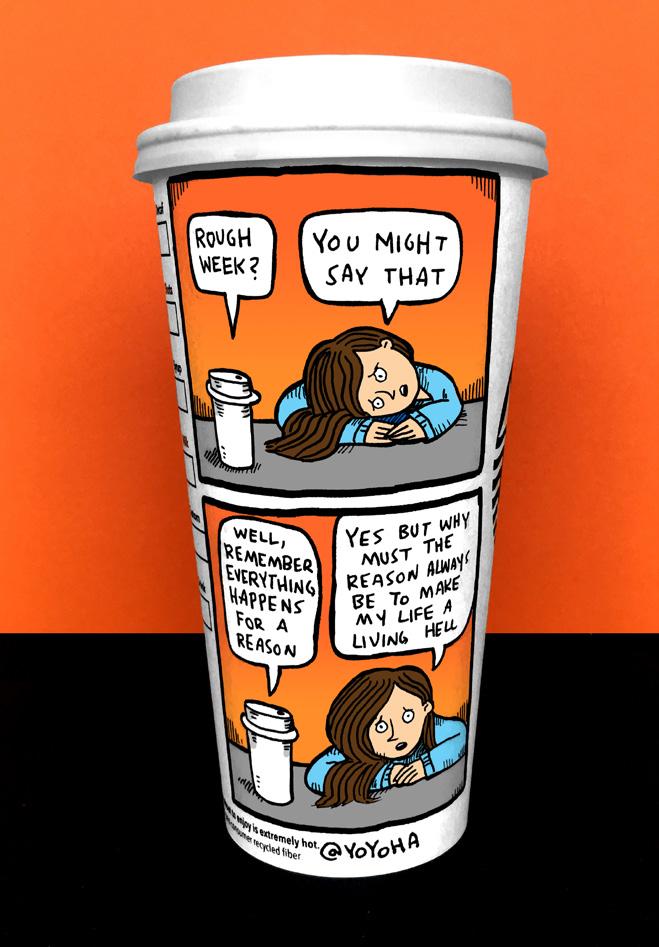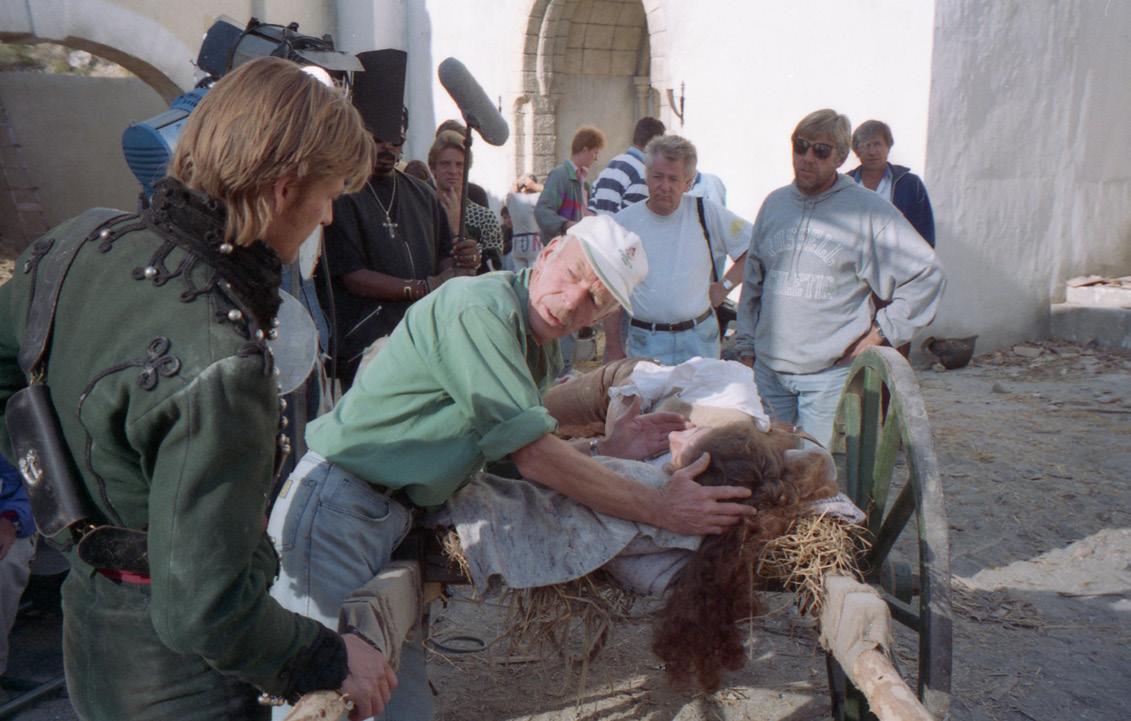
4 minute read
Rain, Trainers and Track
Director Tom Clegg arranges Teresa’s death scene.

Advertisement
The end of the road. Rifleman Harris bayonetted at Waterloo.
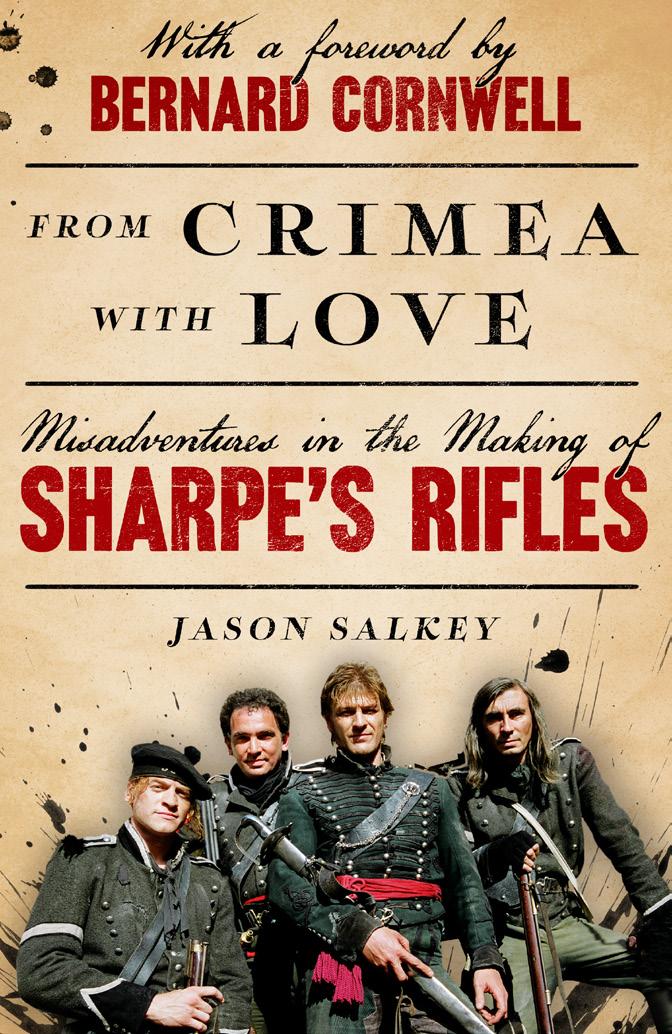
64
Find From Crimea with Love on page 74
PHILOSOPHERS’ DOGS
What if history’s greatest philosophers stole all their best ideas from their dogs? This wittily illustrated book by Samuel Dodson and Rosie Benson seeks to set the record straight, covering everyone from Socra-fleas to Simone de Beau-fur via John Licke and Mary Woof-stonecraft in its quest to show that our four-legged friends have always been the true masters of enlightenment. In the extract below, we learn about the debt Plato’s thinking owed to his pet molosser Fido-rus.
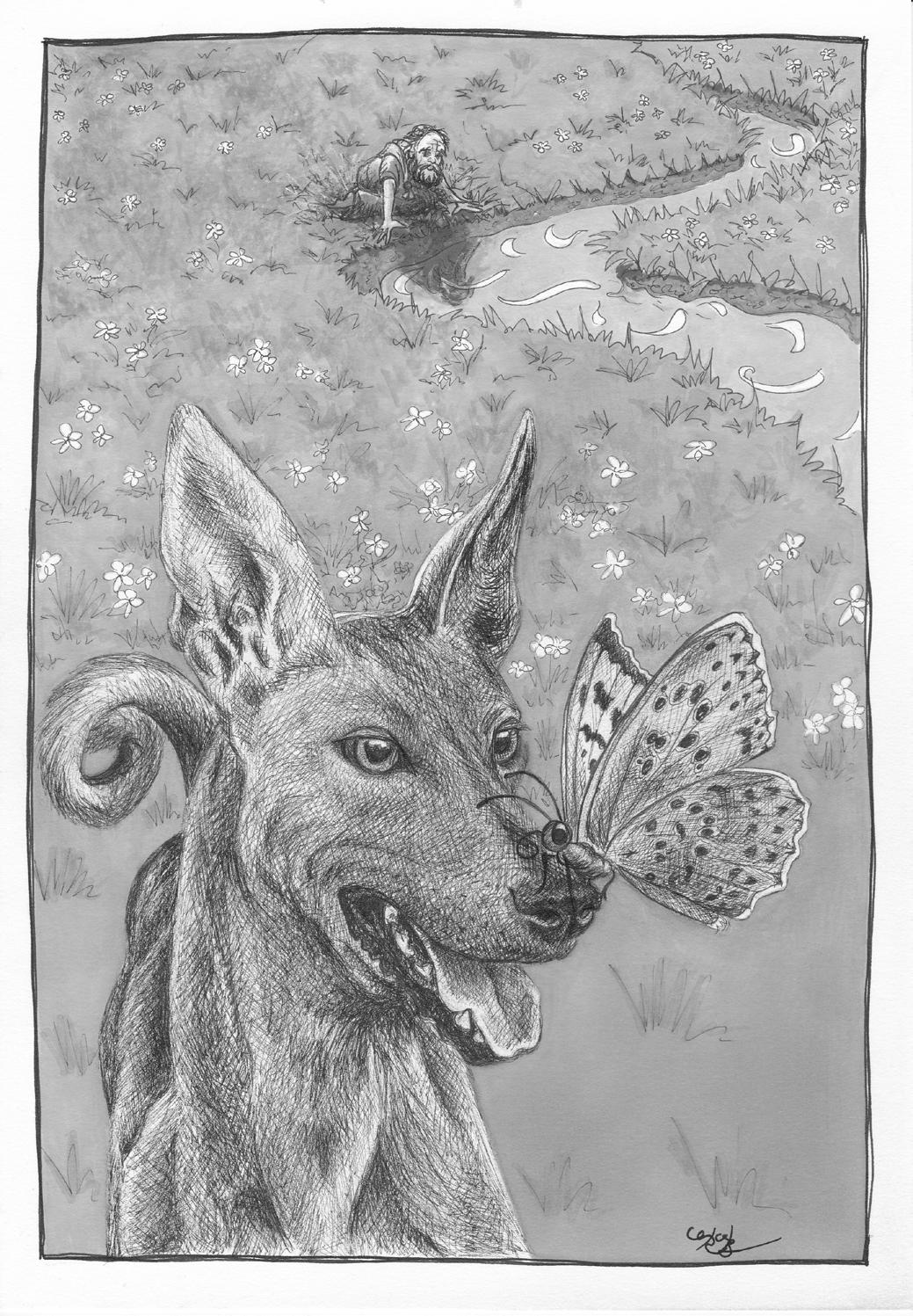
65
‘The unexamined life is not worth living… unless you are a dog and can spend an afternoon chasing butterflies.’
Name: Plato Dog’s name: Fido-rus Breed: Molosser Born: 428 bce Went to live on the farm: 348 bce Age in dog years: 337
Principles • A true republic should be run by dogs and full of licks. • Of all the gods, Dog is the best friend of humankind, the helper and healer of all ills that stand in the way of human happiness. • We should think more carefully rather than be led by our instincts.
Likes/favourite pastimes • Looking at beautiful things that possess the ‘form of the good’, like tennis balls • Practising self-control, reasonableness and independent thinking • Examining all aspects of life, especially aromatic cowpats
Special interest: chasing butterflies
If we could conceive of the perfect form of government for society, what would it look like? For one of the great canine philosophers, the answer was obvious: there should be more dogs in it.
Plato’s dog, Fido-rus, was one of Socrates’ dog’s greatest students. But he was a fantastic philosopher (and a very, very good dog) in his own right too. He was fascinated by questions that asked how we should govern ourselves, and tried to describe the perfect society. He believed the ideal state should be made up of a thinking elite (philosophers’ dogs), who would be protected by the strongest guard dogs for defence against possible attacks by cats or squirrel invasions. Beneath the thinkers and the guard dogs, you would have the working dogs, whose job it would be to make sure sheep were in the right place, and all bones buried in well dug holes. Finally, beneath the working dogs, you could have humans, who might be allowed to perform important duties, like petting the dogs and giving them belly rubs.
For Fido-rus, this hierarchy was based on a dog’s wisdom – something he felt was incredibly important. He once observed, ‘Wise
66 dogs bark because they have something to say; foolish dogs woof because they have to woof at something.’
In his ideal society, the wisest, ‘thinking’ dogs would be allowed to immerse themselves in philosophy to consider the answers to important questions such as, ‘Is it better to play fetch with a tennis ball or a discus?’ They could then make rational decisions (about whether we play with the ball or discus on any given day), and so govern the world effectively.
Plato’s dog believed that successful states would have a canine ‘fur-losopher king’ as head of state. This was because he saw that dogs look naturally towards the light, are all very good boys and girls, and are uninterested in foolish human things like money. As a result they would be incorruptible.
He described this type of state in one of his most important works, The Republick (heavy emphasis on lick). In his ideal society, dogs would be free to lick any and all faces, regardless of whether they had recently eaten a cowpat or some suspicious and long-discarded piece of meat.
Unfortunately, no canine has ever been able to live under such a government. Instead, Plato, that classic canine-idea stealer, flipped his dog’s ideas to such an extent that he wound up arguing for men – not dogs – at the top of any system of government. And look how well that’s worked out over the past 2,500 years.

Find Philosophers’ Dogs on page 95 67
ALL THE COFFEE CUPS
Since 2014, US-based creator Josh Hara has been drawing on takeaway coffee cups and uploading them to the internet. Over the years, these comics – more than 500 of them – have gained a huge following on Twitter and Instagram, and now Josh has compiled the best of the bunch in All the Coffee Cups. From pop culture to politics via memes, jokes and social commentary, Josh takes us on a journey through the highs and lows of the last few years, while paying tribute to the magical drink that got him through it all. Below are just a few examples of Josh’s delightful espresso-fuelled creations.
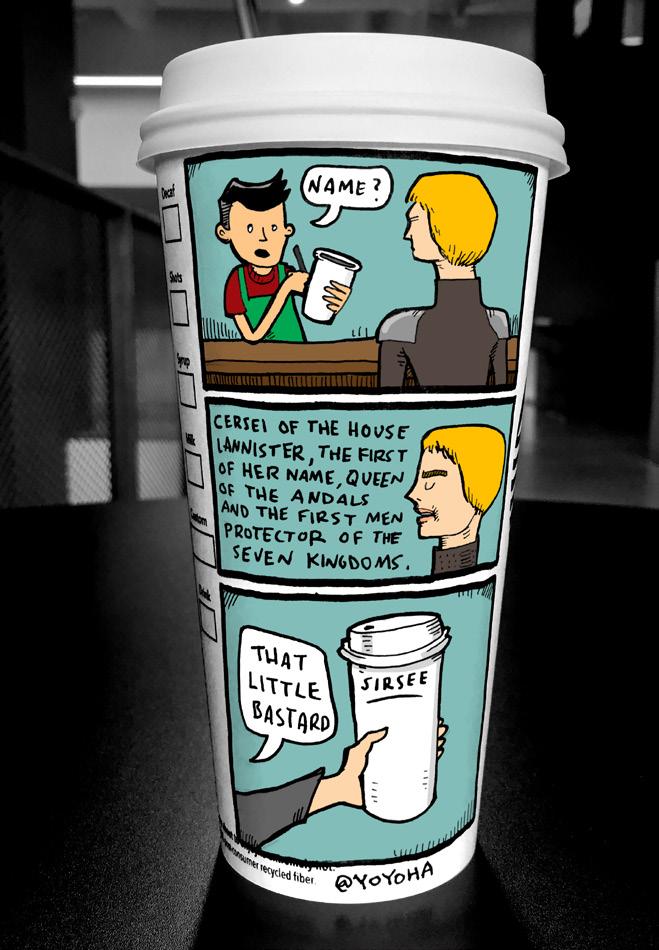
68 69

